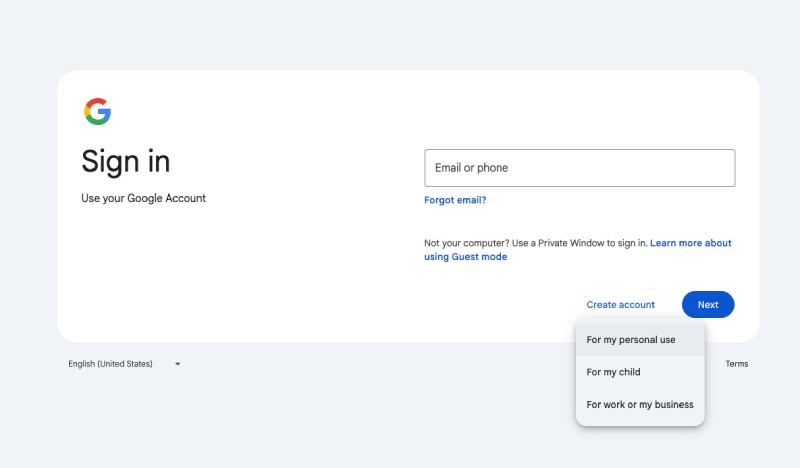Running Google Ads should move the needle for your business, but when a campaign starts draining budget without producing real results, other warning signs start to add on fast. Rising costs, stalled conversions, and shrinking visibility are often symptoms that something deeper is off. The challenge is knowing what to check first before wasted spend gets out of hand.
What Defines a Failing Google Ads Campaign
Before jumping into diagnostics, it’s important to define what failing actually means in the context of Google Ads. A campaign can be considered unsuccessful when it fails to meet business objectives like target CPA or ROAS, when it produces little to no qualified conversions, or when it spends heavily without results.
Another signal is wasted spend caused by ads showing for irrelevant queries or in the wrong locations. Google offers diagnostic insights like impression share and Search Lost IS, both of which highlight where campaigns may be losing ground because of limited budgets or weak Ad Rank. Using these metrics grounds the assessment in measurable outcomes rather than guesswork.
Spot the Hard Stops Before Anything Else
The fastest way to spot a failing campaign is to look for hard stops, as ads that are disapproved in Policy Manager never reach audiences, making policy compliance one of the first checks. Declined payments can also halt delivery, so reviewing billing is essential. At this point, make sure that conversion tracking is operating correctly.
Within Goals and Conversions, verify that actions are being recorded and that recent conversions are visible. If they’re flagged as unverified or inactive, use Google’s troubleshooting guides to resolve the issue.
For accounts connected to GA4, make sure Ads and Analytics are linked and that events are properly imported as conversions. A campaign without valid tracking is impossible to evaluate because performance data is incomplete.
Reading Budget and Pacing Signals Correctly
Campaigns limited by budget often struggle to deliver consistent visibility. When Google Ads shows the “Limited by budget” status, it means the campaign is missing out on impressions. The Search Lost IS (budget) metric quantifies this loss, offering a measurable view of reach that was unavailable due to underfunding.
It’s also important to remember that daily spend can exceed the daily cap on high-traffic days; however, spend across the month will not surpass the set monthly budget. This pacing detail provides context when judging performance in relation to spend. A failing campaign might not be spending enough to gather momentum or might be spending without returns.
What Bidding Statuses Reveal About Performance
Smart Bidding strategies often show statuses such as “Learning,” “Limited,” or “Eligible.” These statuses reveal why bidding is not delivering consistent results. A campaign in Learning, for instance, needs time to stabilize, while Limited signals constraints that reduce effectiveness. Beyond bid strategies, auction health must be reviewed.
The Auction Insights report highlights whether competitors are suddenly outranking or overlapping more often, which can explain cost spikes or declines in visibility. A rapid change in competitor behavior can be a major factor in campaign underperformance.
Cutting Waste Through the Search Terms Report
The Search Terms Report remains one of the most direct ways to diagnose wasted budget. It reveals the actual queries that triggered ads, providing transparency into how spend is being allocated.
Irrelevant terms can be added as negatives to stop wasted impressions, while high-performing queries can be promoted into targeted keywords. A poorly managed campaign often leaks spend here, as irrelevant queries drain the budget without conversions. Over time, this weakens overall performance and erodes ROI.
Getting Targeting and Location Settings Right
When location targeting is too broad, campaigns often fall short. Google defaults to “Presence or interest,” which can deliver traffic from regions outside the intended market. The “Presence” option restricts your campaign reach to users currently inside the defined target region, eliminating outside impressions.
Excluded locations should also be reviewed, as they may block relevant audiences if configured incorrectly. When targeting basics are off, campaigns can appear to underperform simply because ads are reaching the wrong people.
Using Quality Signals to Diagnose Relevance
Quality Score acts as a diagnostic at the keyword level, grading expected CTR, ad relevance, and landing page experience. Low scores point to gaps in relevance or poor landing page performance. Each component provides guidance on what to improve first, whether that means refining ad copy, aligning keywords more closely, or enhancing page experience.
Ad Strength, meanwhile, is often misunderstood. It provides feedback on asset variety and coverage but does not influence Ad Rank or auction outcomes. Treat it as guidance for building better ads rather than as a measure of live performance.
Managing Match Types and Negative Conflicts
The role of match types cannot be overlooked. Broad, phrase, and exact matches each behave differently, and a sudden shift toward a broader match can inflate costs rapidly. Reviewing match type strategy helps clarify if spend is going to relevant searches.
Negative keywords, while powerful, can also block good traffic if used incorrectly. If performance declines after adding negatives, audit the list for conflicts that may be preventing strong queries from showing.
Bringing Campaigns Back on Track
Diagnosing a failing Google Ads campaign does not have to feel overwhelming. With the right checks in place, issues become easier to identify and resolve before they drain more budget or limit growth. Improvements are available in many forms, from spotting abrupt braking to improving targeting accuracy and elevating user experience, and together they drive stronger long-term results.
At 321 Web Marketing, our focus is on building digital strategies designed to generate measurable progress and growth for your business. Schedule a consultation with us today to learn how we can convert low-performing ads into powerful growth drivers for your business.










